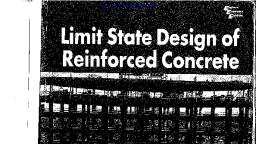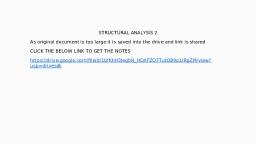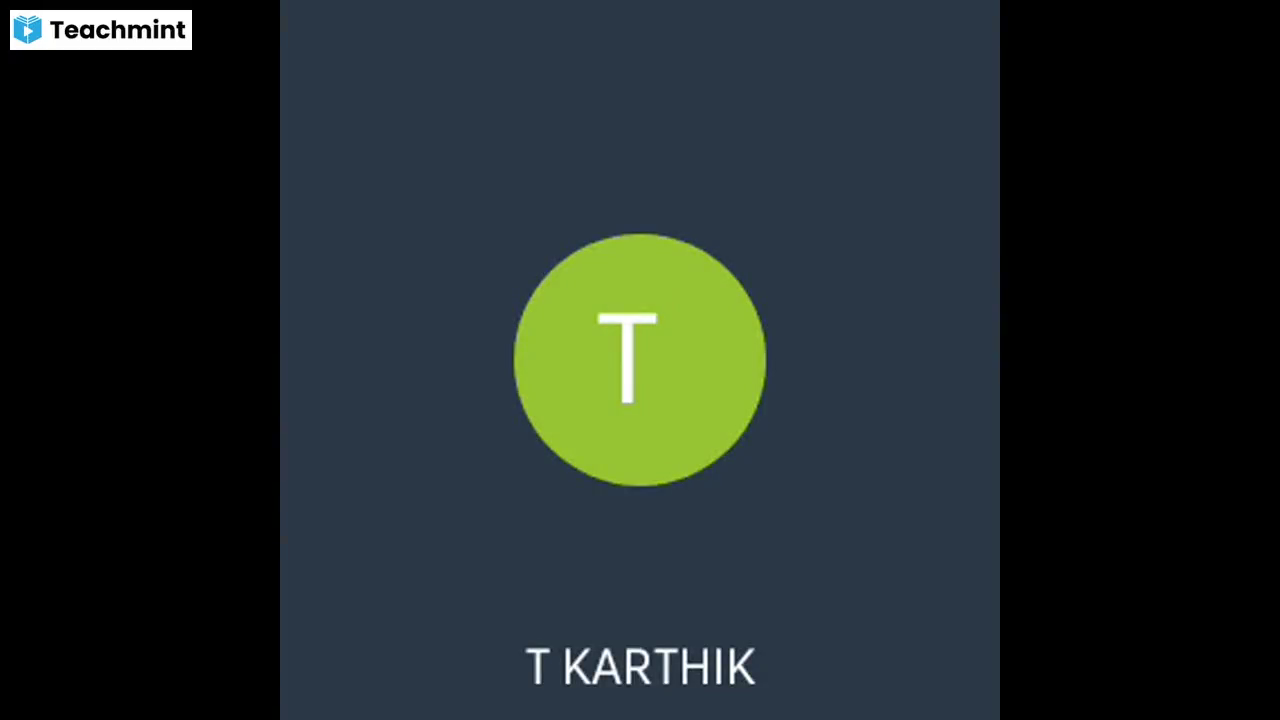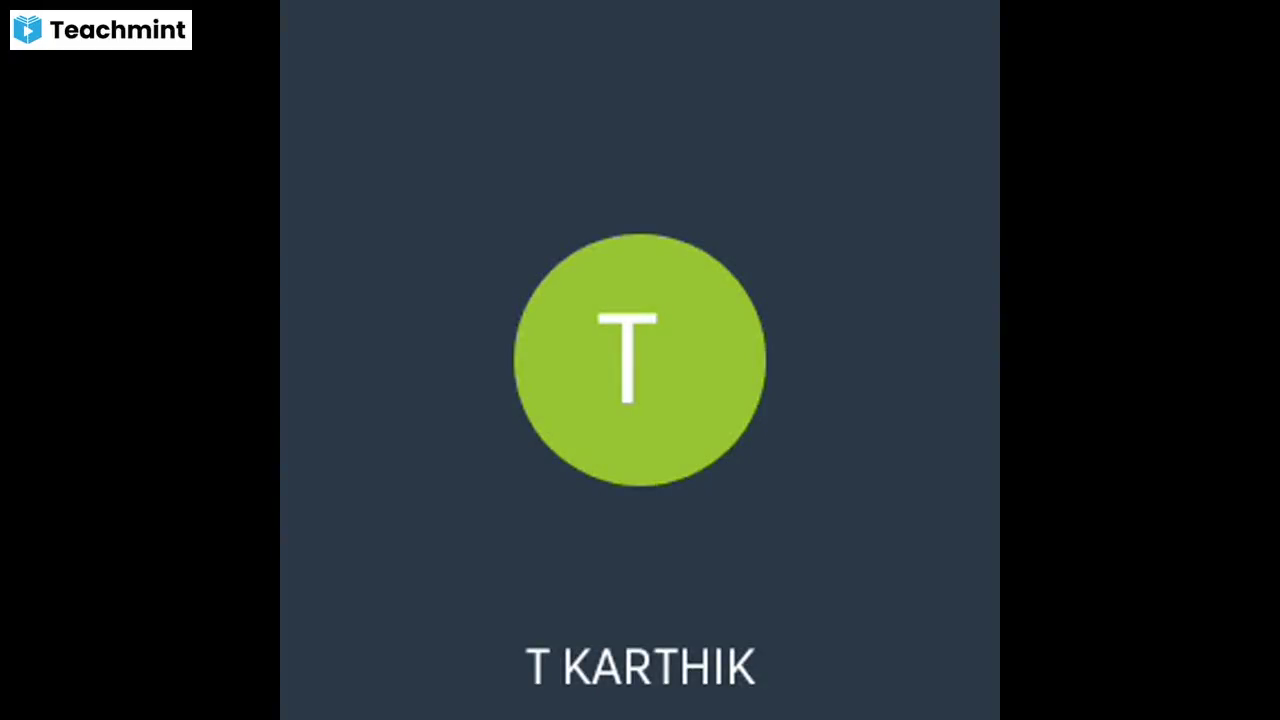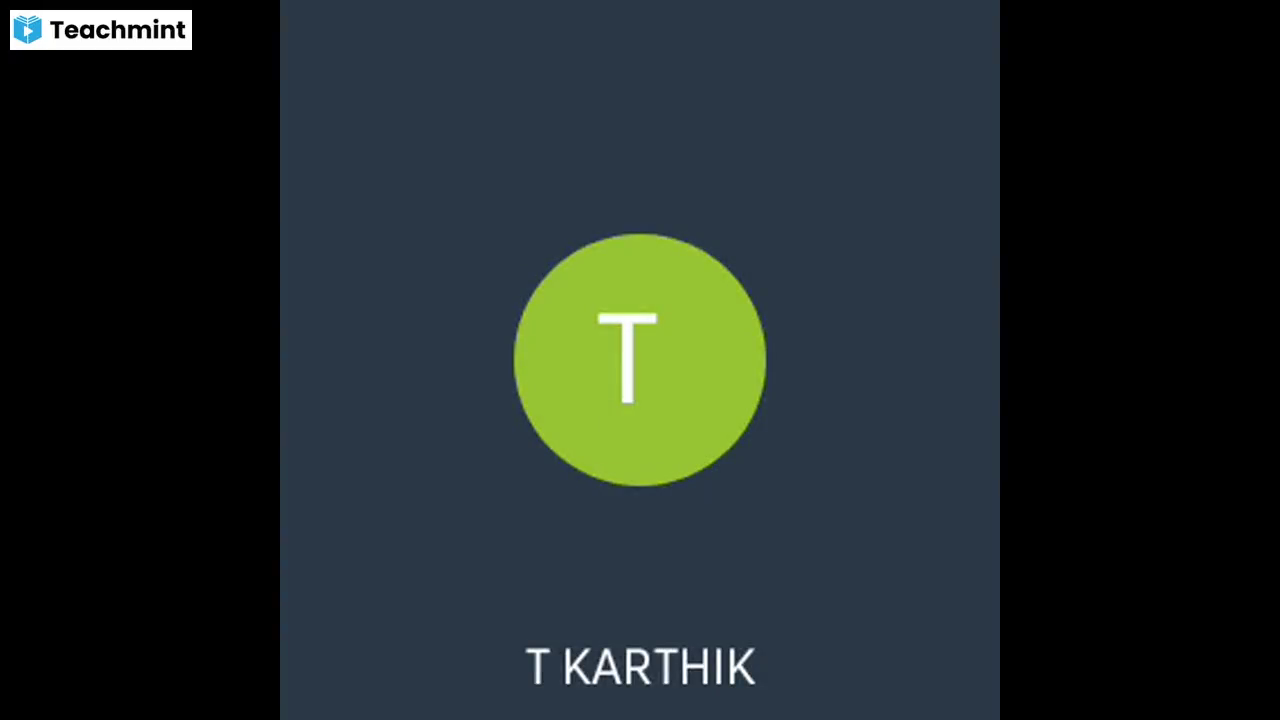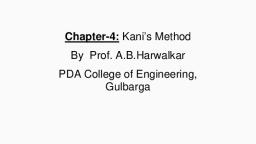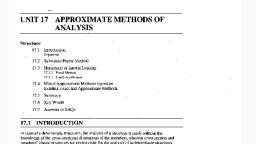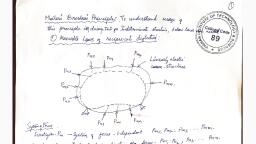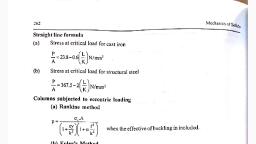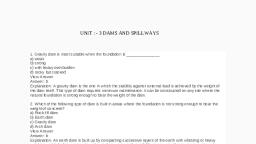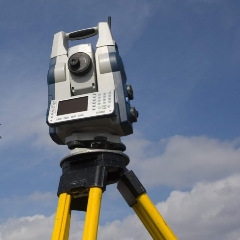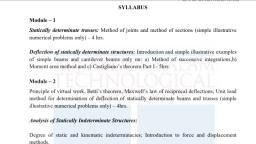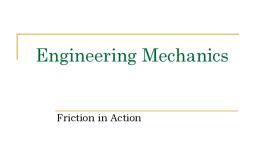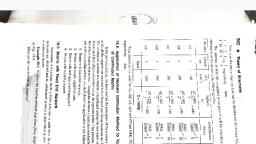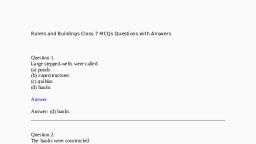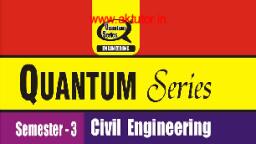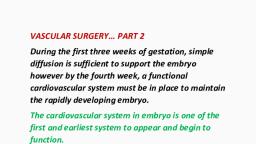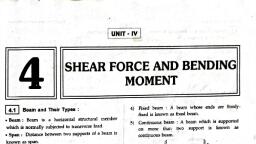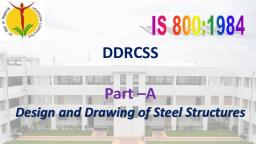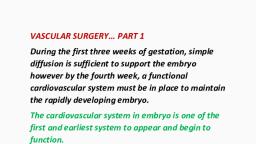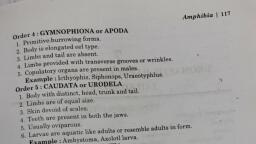Page 1 :
Chapter, , 20, , eee, SSeS, SS, , SSS, , , , , , , , , , , , , , SSS, , , , , , SSS SSS, SSeS, SSS v_*_*—, , Two-Hinged Arches, , 1. Introduction., i Horizontal thrust in two-hinged arches., \) Horizontal thrust by strain energy., , )4 Horizontal thrust = by _ flexural, , deformation., |3. Types of two-hinged arches., , '6 Horizontal thrust in a two-hinged, parabolic arch carrying a concentrated, load., , \). Horizontal thrust in a two-hinged, , circular arch carrying a concentrated, load., , )& Horizontal thrust, Parabolic arch carrying a uniformly, , distributed load over the entire span., , in a_two-hinged, , |, | Effect of change in temperature in a, / two-hinged arch., , “'0. Straining actions in a two-hinged arch., , 'l Influence lines for moving loads over, two-hinged arches., , Introduction, , A two-hinged arch. as the name indicates,, is an arch hinged on its two supports only. Like, a three-hinged arch. the rea at the, supports of a two hinged arch wil ist Of 2, vertical component V, and V, as well as, horizontal component H. The vertical, components of the support reactions may be, easily found out by equating the clockwise and, anticlockwise moments of all the forces, on the, arch about any one hinge., , As a matter of fact. a two-hinged arch is a, statically indeterminate structure. since the, horizontal thrust can net be found out by the, equations of staneal equilibnum., , 20.1, , , , , , , , , , , , , , , 20.2 Horizontal Thrust in Twohinged Arches, We have already discussed in Art. 20.1, that a two-hinged arch is an indeterminate, structure. Therefore the horizontal thrust in a, two-hinged arch is found out on the following, assumptions., 1. Before loading, the arch is free from, stresses., 2. The supports A and 8, are rigidly, hinged., 3, After loading, the honzontal span AB, of the arch remains unchanged., The horizontal thrust in a two-hinged arch, may be found out either by the strain energy, method or by the flexural deformation., , 583
Page 2 :
584 m Theory of Structures, , 20.3 Horizontal Thrust by Strain Energy Method, Consider an arch ACB, hinged, at its two supports A and B,, , Let 1 = Span of the arch,, Ye = Central rise of the arch, and, H = Horizontal thrust in the arch., , We know that the bending moment at any section X of the arch,, , M = py, - Hy i), where [Ly is the bending moment at X, by considering the arch as a simply supported beam of span, land Hy is the bending moment at X due to the horizontal thrust M., , Now consider a small element of the arch. We also know that the total strain energy stored in, the element,, , , , dU _ Mas, dH 2EI, and the total strain energy in the arch,, joa, U= VET, , 0, , us Hy)? .ds, 2EI (. M =py -Hy), 0, , t, , pp —H.y)(—y).ds, 2ET, , 1 Il, wy.d. es, = PxeyOs yds, , ‘ El 5 A, , , , Since, no strain energy can be stored in a two-hinged arch, therefore equating the above, equation to zero,, , 1 !, H yrds _ Ly y.ds, , , , , , EI aH =, 0, }, Hy -y.ds, El, ‘ yds _ i Ly .y.ds =, ee 7 ce BE), 0 0 EI, , 0, , 20.4 Horizontal Thrust by Flexural Deformation, Consider an arch rib ACB subjected to some bending moment as shown in Fig. 20.1., Now consider a small element ds of the arch at C. Let this arch element ds be subjected to, , M. As a result of the bending moment, let the arch rib be bent through a small, , bending moment P :, a new position B, as shown in Fig. 20.1. Through B draw a, , angle di and the support B occupy
Page 3 :
Two-Hinged Arches @ 585, , , , Fig. 20.1, , attical BB, and through B, draw B,B, a perpendicular to it. Since the angle di, through which, wtion of arch CB has rotated is very small, therefore length of the chord CB may be taken to be, mal to CB,., . Now, a little consideration will show that the vertical displacement of B is BB,, whereas the, anizontal displacement of B is B,B,. We see that in triangle BB B.., B,B, = BB, cos Z BBB, = CB. di. cos 4 BB,B,, , , , (-: BB, = CB.di), = di. CB cos Z BCD (- ZBB,B, = ZBCD), = CD.di (CB cos Z BCD = CD), = y.di (CD = y = rise at D), , We know that in a curved rib., M E_E_Edi, TOR & is, di, Mads, di = a, Substituting the value of di in the equation for horizontal displacement., . M.ds _ My.ds, BB, = Yo gy, Peed the total horizontal displacement of B due to bending moment on the arch rib from, ‘to B, My.ds, >, , . Since the arch is rigidly hinged at the support B, therefore, the support B cannot undergo any, “‘rizontal displacement,, , Y My.ds =0, , , , El, (uy —Hy)y.ds, ae eet (May Hy), 1 14, xyds yy ‘yds ff, , El ; EI
Page 4 :
586 = Theory of Structures, , , , or, , H= ee, , EI, 0, , The quantity ET is called flexural rigidity of the arch. Sometimes the moment of inertia is not, constant throughout the arch. If the value of moment of inertia at the supports is 7, then the moment, of inertia at the crown J, is generally made to have a relation with the moment of inertia at the, , supports, such that, , I = I, sec 8, where @ is the angle, which the tangent at a section makes with the horizontal. Now taking ds = dx, cos 6 and substituting the values of J and dx in equation (i),, , 1 I, Ly .y.dx. sec 8 Ly y-dx, El, sec 8 F EI, , , , H = 2———_=, ‘ y?.dx.sec® (ee, EI, sec 8 EI, 1, fix-y-ae, 0, H 7, [ya, 0, , A little consideration will show that the values of part [ux -y.dx of the equation depends, , upon the property and loading of the arch, whereas the value of part [ya of the equation, , depends upon the property of the arch alone., , 20.5 Types of Two-hinged arches, The two-hinged arches, like three-hinged arches, may also be of the following two types,, , depending upon the geometry of their axes :, 1. Parabolic arches, and, , 2. Circular arches., As a matter of fact, the determination of horizontal thrust is an important step in analysing &, , two-hinged arch. Here we shall derive an expression for the horizontal thrust in the above two, , types of two-hinged arches.
Page 5 :
Two-Hinged Arches = 587, , 20.6 Horizontal Thrust in a Two-hinged Parabolic Arch Carrying a, Concentrated Load, , W, , Ww, , Vv, Vv,, Fig. 20.2, , A two-hinged arch, having parabolic axis, is known as a wo-hinged parabolic arch. Consider, atwo-hinged parabolic arch AB, supported at A and B. and carrying a poing load W at a distance, a from the support A as shown in Fig. 20.2., , Let 1 = Span AB of the arch, and, , Y¢ = Rise of theorem from the support., , For simplification, let us assume another load W to act at a distance a from the support B as, shown in Fig. 20.2. A little consideration will show, that as a result of this assumed load the, horizontal thrust at A and B will be twice the horizontal thrust due to the given load only. Now, the, vertical reactions V, and V,, will be both equal to W. Consider any section X at a distance x from, A. We find that beam moment, when x = 0 to x =a., , Hy, = We AD, and the beam moment, when x=a to xy=12 ii), We know that Hy» Wx - Wix- a) = Wa, 2, , fu -y.dx =2 Jur -r-de, 0, , u2, , 0, a, , 2 ftxr-y-de#2 firs, 0 0, , a VW, | fxs yd t+ Jur y. a, 0 a, , a uz 7, " dys, , five ‘ Aye v= ada + fwae xt, rc, , , , 2, , ", , , , 0 0, , a swva! ;, 2 ae. fr =x )dv+ a : fear, Ps :, , , , , , : !, , amie at} (2, ce 3.64 lo 2 3, , ", , M2, , la





